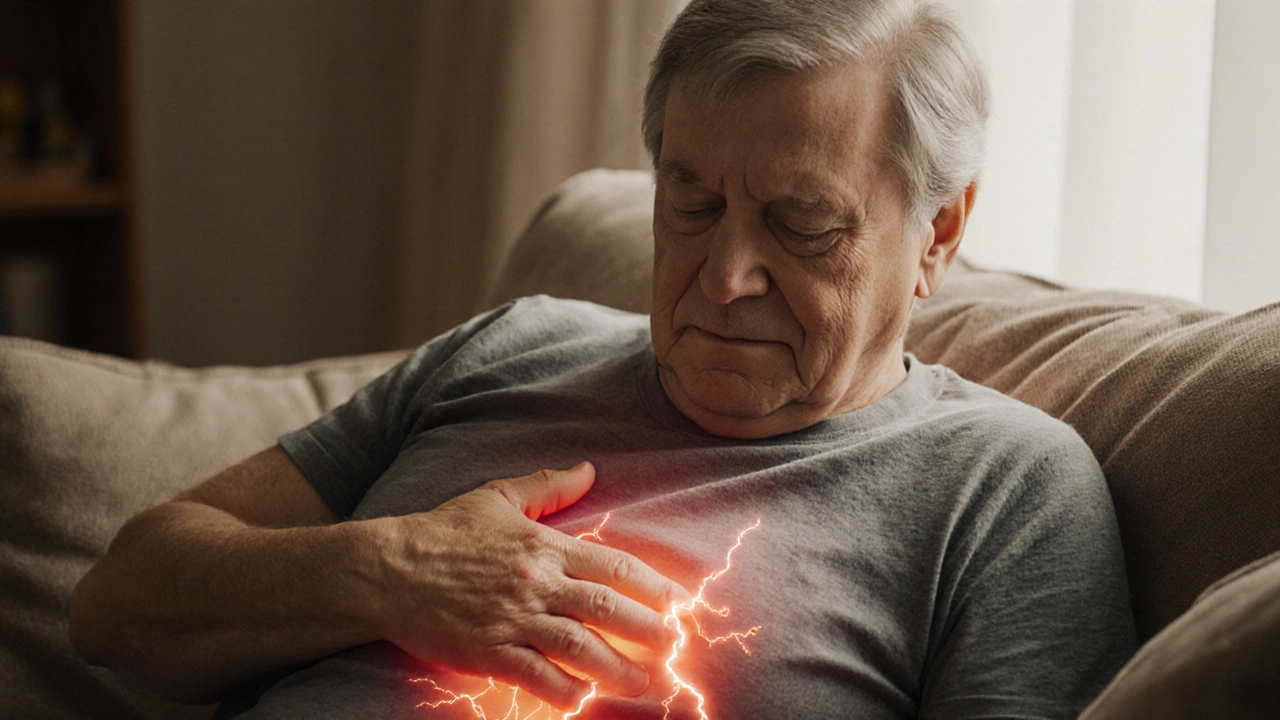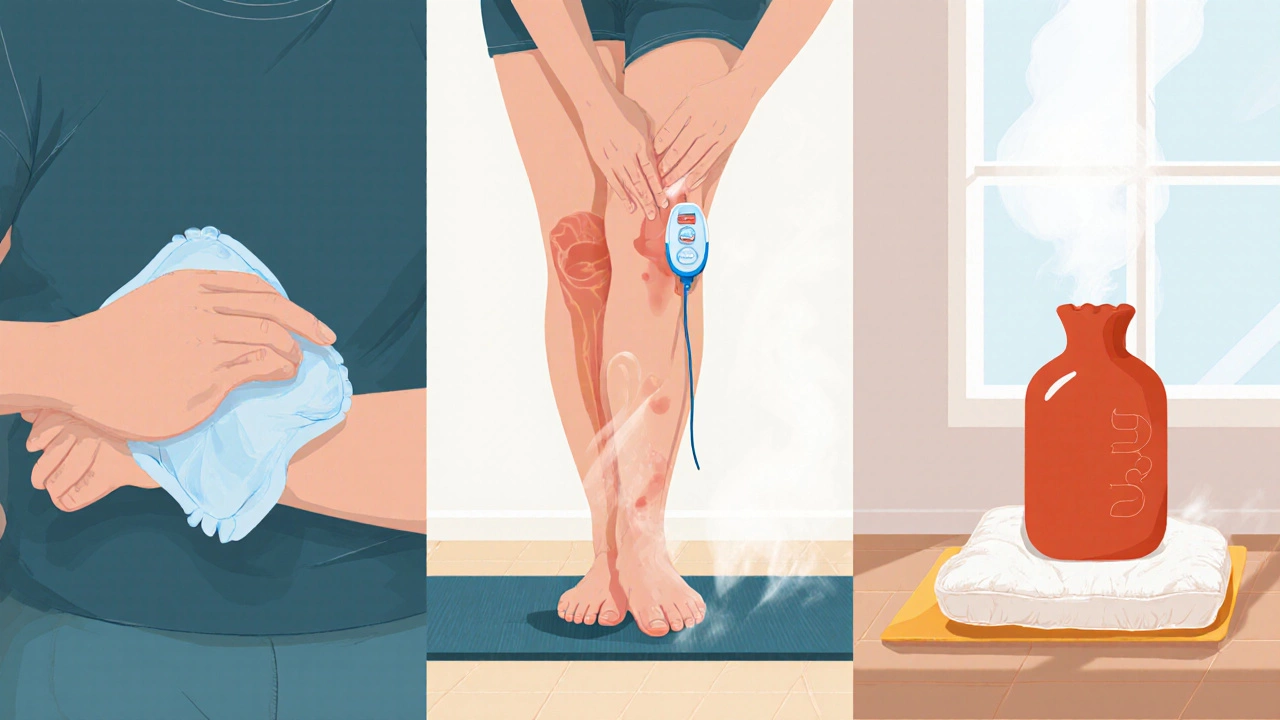 Oct, 9 2025
Oct, 9 2025
Nerve Pain Management Checklist
Recommended Actions Based on Your Input
Based on your selected pain level (5) and location (general), here are suggested next steps:
- Apply cold or heat as appropriate.
- Try gentle movement or stretching.
- Consider over-the-counter NSAIDs if suitable.
- Monitor pain closely for any worsening signs.
Important: If pain reaches 8 or higher, or if you experience any red flag symptoms, contact a healthcare provider immediately.
If you’ve ever felt a sudden, sharp shock that feels like an electric jolt or a burning sting that just won’t quit, you know how quickly nerve pain can hijack your day. When that ache escalates from annoying to unbearable, the panic spikes and you wonder, ‘What now?’ This guide walks you through the exact steps you can take the moment the pain spikes, when to call a professional, and how to build a long‑term plan that keeps the worst attacks at bay.
Key Takeaways
- Identify red‑flag symptoms that demand immediate medical attention.
- Try proven self‑care tricks (cold/heat, positioning, gentle movement) within the first hour.
- Know the main medication families - antidepressants, anticonvulsants, opioids - and their typical dosages.
- Explore non‑drug options such as physical therapy, TENS, and acupuncture.
- Set up a long‑term management routine that includes diet, exercise, and regular specialist check‑ins.
Understand Why the Pain Is So Bad
Neuropathic pain is a type of chronic pain that originates from damaged or malfunctioning nerves. It often feels like burning, stabbing, or tingling and can be triggered by anything from diabetes to a pinched spinal nerve. When the nervous system sends exaggerated signals, the brain interprets them as severe, sometimes crippling, discomfort. Recognising that the pain is coming from the nerves - not just inflamed muscles - helps you choose the right treatment path.

Immediate Steps You Can Take Right Now
- Pause and assess. Sit down, take deep breaths, and note the pain’s location, intensity (0‑10 scale), and any recent triggers.
- Cold or heat. Apply a cold pack for 15 minutes if the pain feels sharp or ‘electric’; switch to a warm compress if the sensation is more of a dull ache. Alternate every hour.
- Gentle movement. Light stretching or a short walk can improve blood flow and reduce nerve irritation. Avoid heavy lifting or prolonged static positions.
- Over‑the‑counter help. Non‑prescription NSAIDs (e.g., ibuprofen 400‑600mg) can lower inflammation that aggravates nerve irritation. Use only if you have no contraindications.
- Positioning. Elevate the affected limb, use pillows to keep joints neutral, and avoid crossing legs or arms for long periods.
- Mind‑body calm. Guided breathing or a 5‑minute mindfulness session can dampen the brain’s pain‑amplifying signals.
When to Call a Doctor - Red Flags
Most nerve‑pain flare‑ups can be managed at home, but certain signs mean you need professional help right away:
- Sudden loss of sensation or motor function in the affected area.
- Severe, unrelenting pain that scores 8‑10 and doesn’t improve after 30 minutes of self‑care.
- New weakness, trouble walking, or loss of balance.
- Fever, unexplained weight loss, or swelling that suggests infection or an underlying disease.
- Any pain following trauma, surgery, or a recent fall.
If you notice any of these, head to an urgent‑care centre or call your GP. Prompt assessment can prevent permanent nerve damage.
Medical Options: Medications and Procedures
After the initial evaluation, a clinician may prescribe one or more of the following drug classes. Below is a quick comparison to help you understand the basics.
| Class | Common Drugs | Typical Starting Dose | Key Benefits | Typical Side Effects |
|---|---|---|---|---|
| Antidepressants | Amitriptyline, Nortriptyline | 10‑25mg at bedtime | Reduces pain signals, improves sleep | Drowsiness, dry mouth, weight gain |
| Anticonvulsants | Gabapentin, Pregabalin | 300mg three times daily | Targets nerve firing, fast onset | Dizziness, swelling, mild euphoria |
| Opioids (short‑term) | Tramadol, low‑dose oxycodone | 25‑50mg every 4‑6h | Powerful relief for breakthrough pain | Constipation, dependence risk, sedation |
Doctors often start with low‑dose antidepressants or anticonvulsants because they address the root nerve‑signal problem. Opioids are reserved for short‑term bursts when other meds haven’t helped.

Non‑Drug Therapies That Help
Medication works best when paired with other modalities. Here are the most evidence‑backed options.
Physical therapy focuses on gentle mobilisation, strength building, and nerve gliding exercises that reduce compression and improve circulation. A therapist can teach you specific stretches for the sciatic nerve, carpal tunnel, or facial nerve, depending on the affected area.
Transcutaneous electrical nerve stimulation (TENS) delivers low‑voltage electrical currents through the skin to block pain signals and stimulate endorphin release. Many patients report a noticeable drop in pain after a 20‑minute session.
Acupuncture inserts fine needles at specific points to modulate nerve pathways and improve blood flow. A 2019 systematic review found a 35% reduction in neuropathic pain scores for patients receiving weekly sessions.
Other supportive therapies include biofeedback, mindfulness‑based stress reduction, and neuro‑feedback training, all of which can lower the brain’s amplification of pain signals.
Long‑Term Strategies to Prevent Flare‑Ups
Managing unbearable nerve pain isn’t just about the crisis moment; it’s about keeping the nervous system calm day‑to‑day.
- Blood‑sugar control. For diabetic neuropathy maintaining HbA1c under 7% markedly slows nerve damage progression.
- Vitamin B12 and D supplementation. Deficiencies are linked to peripheral nerve dysfunction; a simple blood test can guide proper dosing.
- Regular low‑impact cardio. Walking, swimming, or cycling improves nerve health by boosting circulation and reducing inflammation.
- Ergonomic adjustments. Use supportive footwear, keyboard trays, and proper sleeping pillows to avoid chronic compression.
- Scheduled specialist reviews. See a chronic pain clinic where multidisciplinary teams tailor personalized plans and monitor medication side‑effects at least twice a year.
Tracking your pain scores, triggers, and treatment responses in a simple journal (or a phone app) provides valuable data for future appointments and helps you spot patterns before they become emergencies.
Frequently Asked Questions
Can I use over‑the‑counter creams for severe nerve pain?
Topical lidocaine or capsaicin can dull surface sensations, but they rarely control deep, burning neuropathic pain. They work best as adjuncts to oral meds or physical therapy.
Is it safe to combine gabapentin with antidepressants?
Yes, many clinicians prescribe a low‑dose antidepressant with gabapentin because they act on different pathways. Monitoring for dizziness or excess sedation is essential, especially when starting both.
When should I consider a nerve block?
If oral meds and non‑drug therapies haven’t reduced pain below a 4/10 after several weeks, a targeted nerve block (e.g., lumbar epidural or peripheral nerve injection) can provide weeks‑long relief and reset the pain cycle.
Do lifestyle changes really affect nerve pain?
Absolutely. Studies show that quitting smoking, maintaining a healthy weight, and regular aerobic exercise lower inflammatory markers, which directly eases nerve irritation.
What role does mental health play in unbearable nerve pain?
Chronic pain and anxiety/depression share brain pathways. Treating the mental health side with counseling or appropriate meds often reduces the perceived intensity of the nerve pain.
